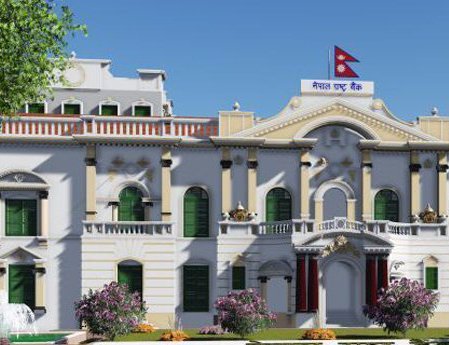
The current fiscal year (FY) is coming to an end witnessing the depletion of liquidity in the bank and financial institutions (BFIs) for the whole of the FY.
The Nepal Rastra Bank (NRB) accounted for excess liquidity on an average of Rs 10 billion in the last 10 days in the end of mid-June 2022, which remains far below compared to Rs 125 billion recorded in mid-July 2021.
Consequently, the shortage of liquidity has triggered a spike in interest rates. The macroeconomic and financial situation published by NRB showed that weighted average interest on loans shot up from 8.53 per cent in mid-May 2021 to 11.42 per cent in the end of mid-May 2022.
The low excess liquidity on the account of the NRB signals that the BFIs have been operating under the shortage of liquidity since the beginning of the running FY. The shortage has spurred the short-term interest rates as well as the long-term.
The NRB data showed that the interbank interest rate of 7 per cent mark as of June 27 also surpassed 4.12 per cent recorded in mid-May 2021.
The spike in interest rate subsequently paralysed the outflow of the loan of the BFIs despite significant improvement in deposit mobilization.
According to the Nepal Bankers Association (NBA) data, the deposit rose by Rs 16 billion from Rs. 4,377 billion in mid-May 2022 to Rs 4,393 billion on 4th June 2022. However, the credit outflow stagnantly stuck during this period. The outflow of loans was Rs 4,194 billion in mid-May 2022 which increased to Rs 4,198 billion in the following days but the trend reversed and the amount dropped back to Rs 4194 billion on 4th June 2022.
In the outgoing FY, the unfavorable external sector posed a serious threat to maintaining sufficient liquidity due to leakage of liquidity in financial sectors where the NRB was compelled to intervene.
The NRB report showed that the base money which is the currency circulating in the financial institutions and the public declined by Rs 123.4 billion in the period first ten months of the current fiscal year from Rs 931.5 billion in mid-July 2021 to Rs 808.1 billion in mid-May 2022. It showed that leakage of liquidity remained significant from the domestic economy in the current FY.
Department of Customs report of the first 11 months showed that the amount of the imports soared by 27.5 per cent to Rs 1,763.2 billion in comparison to the same period of the previous FY which is the major cause of outflow of the liquidity.
Its repercussion was reflected when the NRB report showed that the foreign exchange reserve declined by Rs. 252.1 billion in the period between mid-July 2021 and mid-May 2022 indicating that this much amount returned to central bank from the economy in lieu of foreign currency outflowed from the country.
However, the NRB report of the first ten months of the current FY recorded that total remittance edged up barely 0.2 per cent to Rs 811.79 billion in comparison to the review period of the previous FY. The remittance is a vital source for deposit mobilization.
The existing shortage of liquidity has mainly been attributed to the post-COVID burgeoning imports in the backdrop of debilitating remittance inflow.
The performance of the government expenditure has not been agile to inject sufficient liquidity into the economy in comparison to the way it has been sapping liquidity through revenue and public debt.
Subsequently, the unspent government reserve accumulated at the treasury with a surplus of Rs 325.14 billion in mid-May 2022 which is far above Rs 198.7 billion recorded in mid-July 2021.
Besides, the inflow of tourists is yet to recover the pre-COVID level whereas the outflow of tourists is putting pressure on foreign exchange reserves.
In the meantime, the NRB used its monetary and policy measures to meet the demand for liquidity to the BFIs.
The NRB monetary operation report showed it has absorbed Rs 60 billion as of 1st July while it injected Rs. 9289.7 billion through the monetary instruments in the review period of mid-May. Despite bank rate rise after mid-term evaluation, the way the BFIs took standing liquidity facilities worth Rs 8768.4 billion unveiled the urgency of liquidity in the BFIs.
According to the NRB Deputy Spokesperson Narayan Prasad Pokhrel, the excess liquidity in the NRB accounted for around Rs 15 billion by June end. He argued that the rise in the interest rate has multiple causes rather than only the shortage of liquidity reports The Rising Nepal.
- Biden And Netanyahu Discuss Gaza Ceasefire
- Jul 26, 2024
- Paris Olympic Will Start On Saturday
- Jul 25, 2024
- IOC Names Hosts Of Winter Games
- Jul 25, 2024
- 85 % Paddy Plantation Completes Nationwide
- Jul 24, 2024
- Kamala Harris Hits Presidential Campaign Trail
- Jul 24, 2024
















